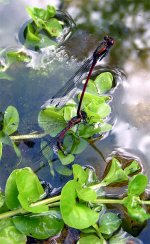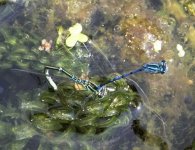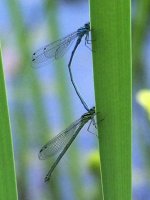steve_nova
Well-known member
Round at mum and dads today and luckily I had my camera with me. I saw many coupled and un-coupled damselflies (all the same colour so all the same species?) at the pond, some laying eggs. I was taken by their grace and beauty and their alertness! It took many goes to get a half decent shot of them. One I have entered in the June Competion, the other is here.
What species are they anyone. Thanks in advance.
What species are they anyone. Thanks in advance.






